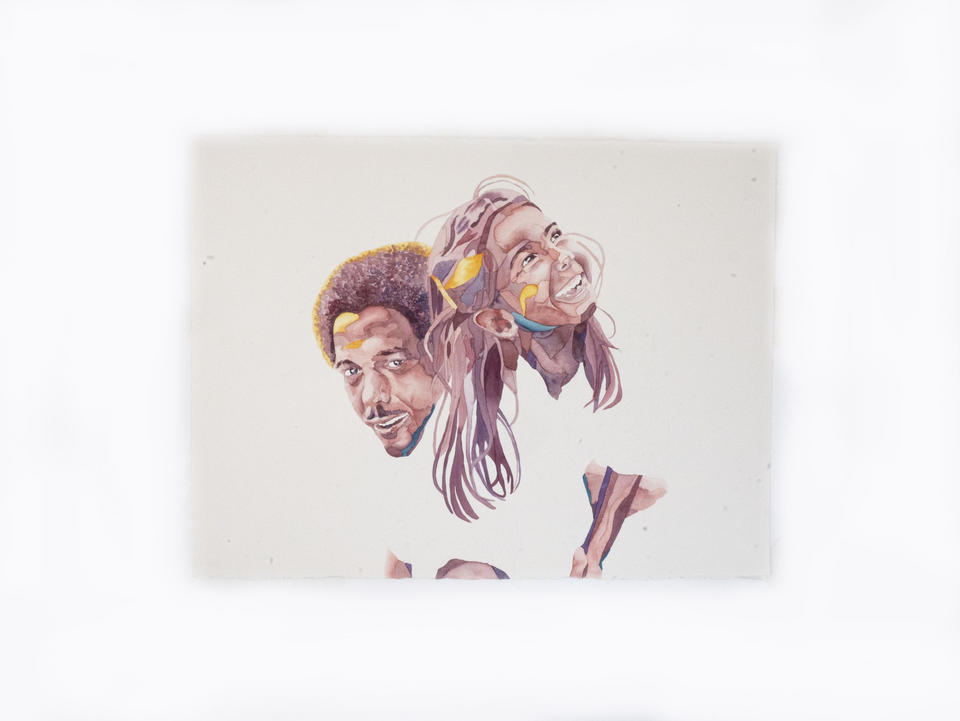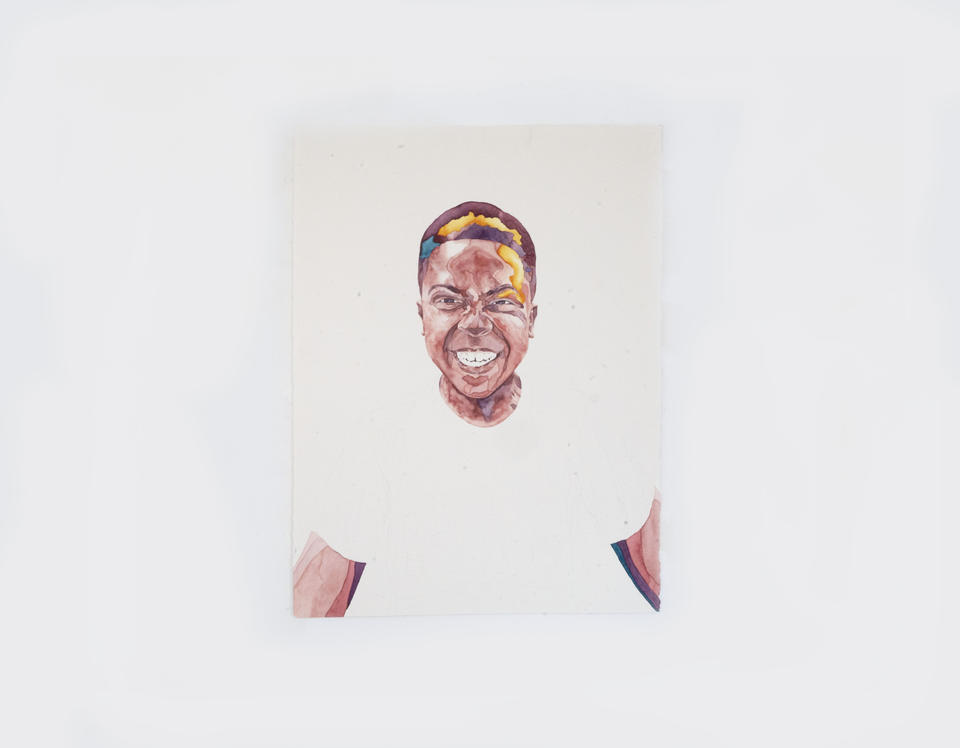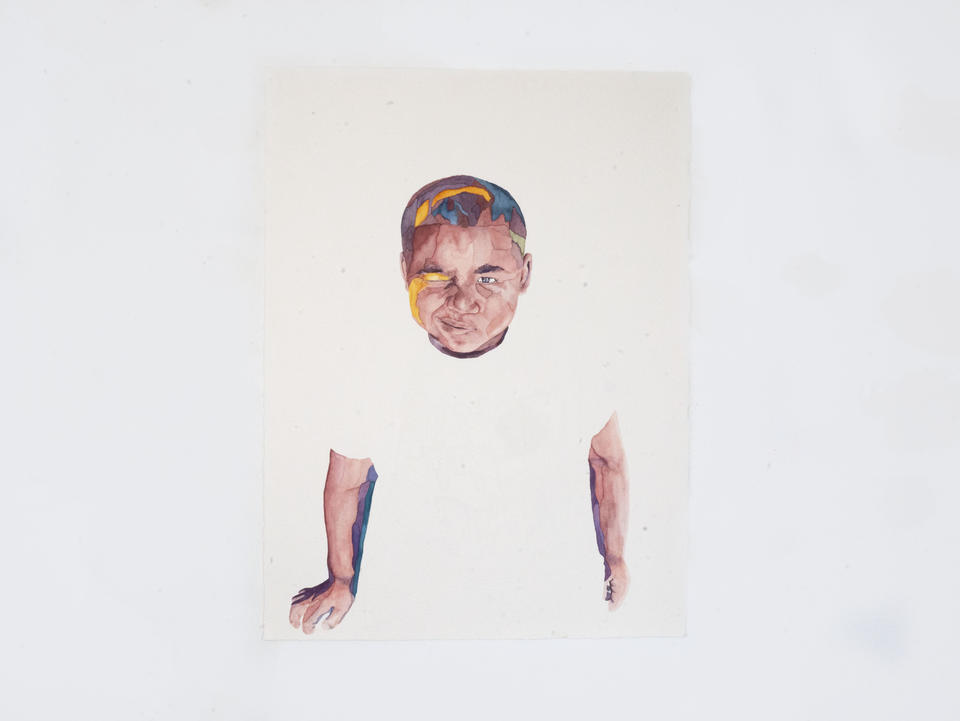Vessna Scheff
Pace/Place/Space/Tempo—The Choreography of Equity and Expressions of Black Living
My skin is natural. My skin is political.
My hair is natural. My hair is political.
My speech is natural. My speech is political.
There’s no such thing as apolitical.
My current interdisciplinary practice in painting and performance focuses on how Black diasporic identities hold, create, and process subsistence narratives. For this research, I am asking the questions: What role does pace play in resistance strategies and how can it be communicated through tempo? How are unspoken histories conveyed through movement, silence, the glance of an eye, fat crackling in a cast iron, pushing play on a walkman, and seeds thrown in the garden? How can my practice ‘map’ these diasporic ways of knowing and amplify ongoing struggles for Black womxn living?
As a study of embodied histories, my inquiry begins with a dialogue between the external and internal which I will describe through the lens of movement, informed by Black Feminist Theory, The Black Radical Tradition, and In The Shadow Of Slavery. I will conclude with how diasporic these ways of knowing are dynamically choreographed to create liberatory experiences within oppression through experimentalisms in pace, place, space, and tempo.
we made ourselves small
so we’d have room to move
room to dance
room to sing
room to laugh
room to scream
room to think
without their eyes watching
so that we’d have room to breathe
and more comfortably sit
and move our wrists and our hips
so that we would know
in the marrow of our bones
what freedom feels like.
Image
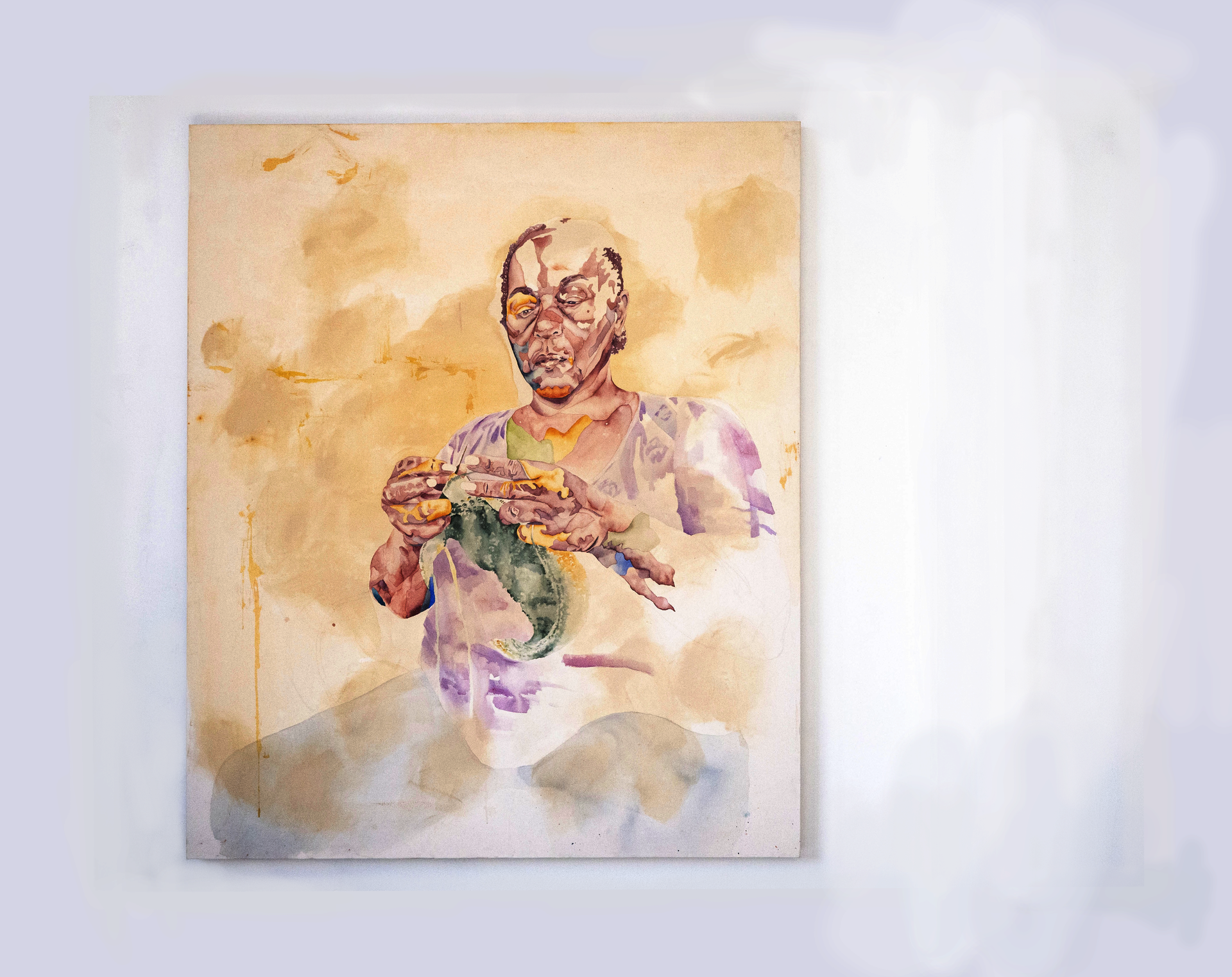
"Knit Seeds in the Soil" | Watercolor on canvas | 5’ x 6’ | 2022
pt. 1
My skin is natural. My skin is political.
My hair is natural. My hair is political.
My speech is natural. My speech is political.
There’s no such thing as apolitical.
My current interdisciplinary practice in painting and performance focuses on how Black diasporic identities hold, create, and process subsistence narratives. For this research, I am asking the questions: What role does pace play in resistance strategies and how can it be communicated through tempo? How are unspoken histories conveyed through movement, silence, the glance of an eye, fat crackling in a cast iron, pushing play on a walkman, and seeds thrown in the garden? How can my practice ‘map’ these diasporic ways of knowing and amplify ongoing struggles for Black womxn living?
As a study of embodied histories, my inquiry begins with a dialogue between the external and internal which I will describe through the lens of movement. I am interested in how diasporic ways of knowing are dynamically choreographed to create liberatory experiences within oppression through experimentalisms in pace, place, space, and tempo.
we made ourselves small
so we’d have room to move
room to dance
room to sing
room to laugh
room to scream
room to think
without their eyes watching
so that we’d have room to breathe
and more comfortably sit
and move our wrists and our hips
so that we would know
in the marrow of our bones
what freedom feels like.
Image
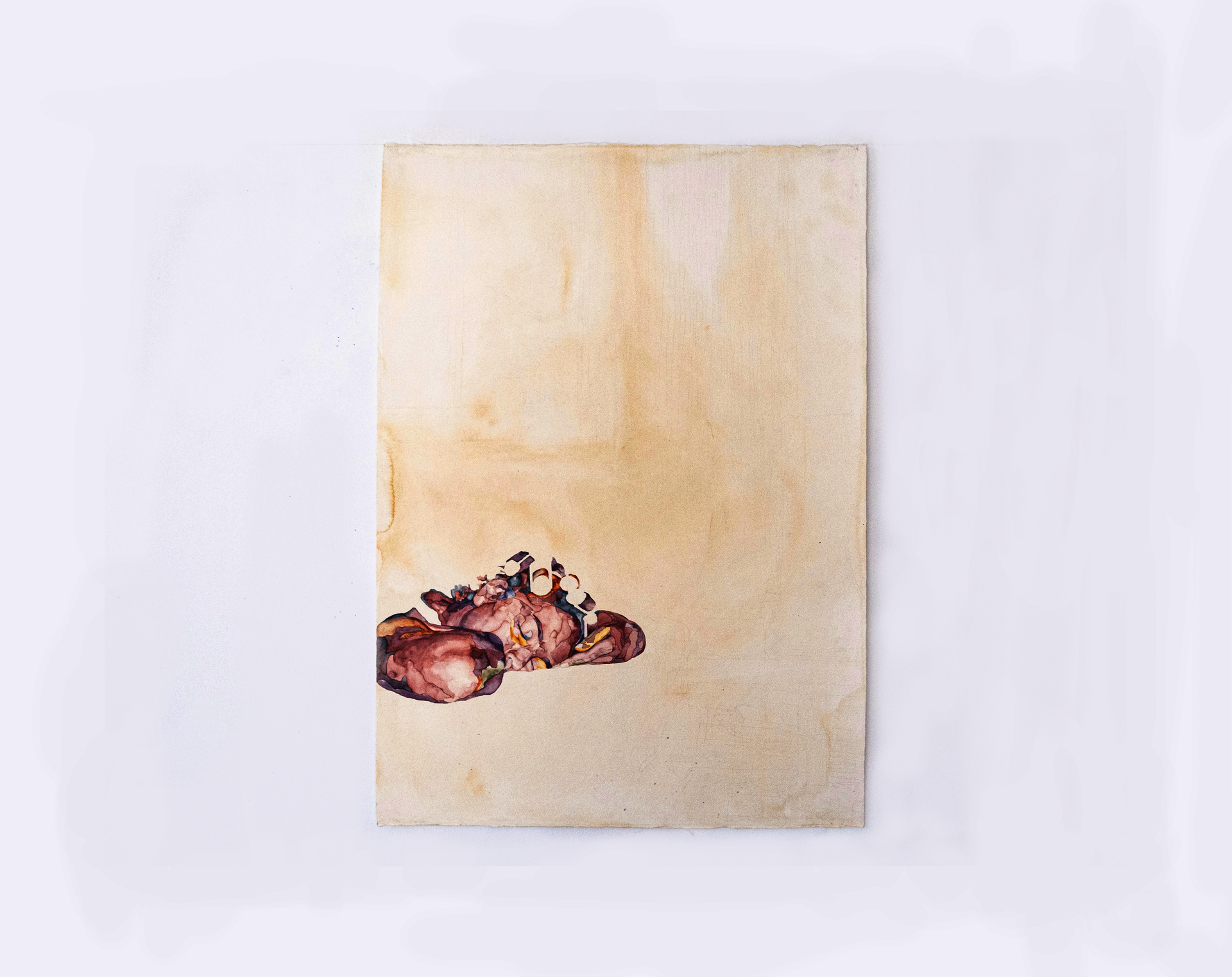
"Setting" | Watercolor on paper | 29.5” x 41.5” | 2022
pt. 2
Movement- publicly, socially, and privately- is as much personal as it is political. How we are able to move informs us of ourselves in relation to our surroundings. This embodied knowledge- dictated by a negotiation between our bodies and the movements of those around us shape the information we receive about who we are before we learn to speak. This choreography of relating is passed through touch and electric currents which reshape the circuitry of our developing minds and become stored in how high we hold our shoulders and our stress responses later in life, as studied by child trauma researchers Bruce D. Perry and Maia Szalavitz. Understanding movement as foundational to our conception and development of self reveals nuances to how we must approach and ground our moves towards equity.
the warmth
of womxn around womxn
of womxn holding womxn
of heat on hair
of sizzle and scent
of I’m so aware of my ear right now
of breath to cool
of heat on my neck
of singing to pass the time
of ow! / sorry honey
of laughing and love
of / hold your ear
of ow! / if you would stop moving…
of / can you write the song lyrics to A Woman’s Worth so we can sing along?
of lessons learned from tv and talking
of / don’t you come home with any surprises like that, do you hear me?
of sitting on the floor wrapped by you
of kinks
giving us
all the time in the world.
Image
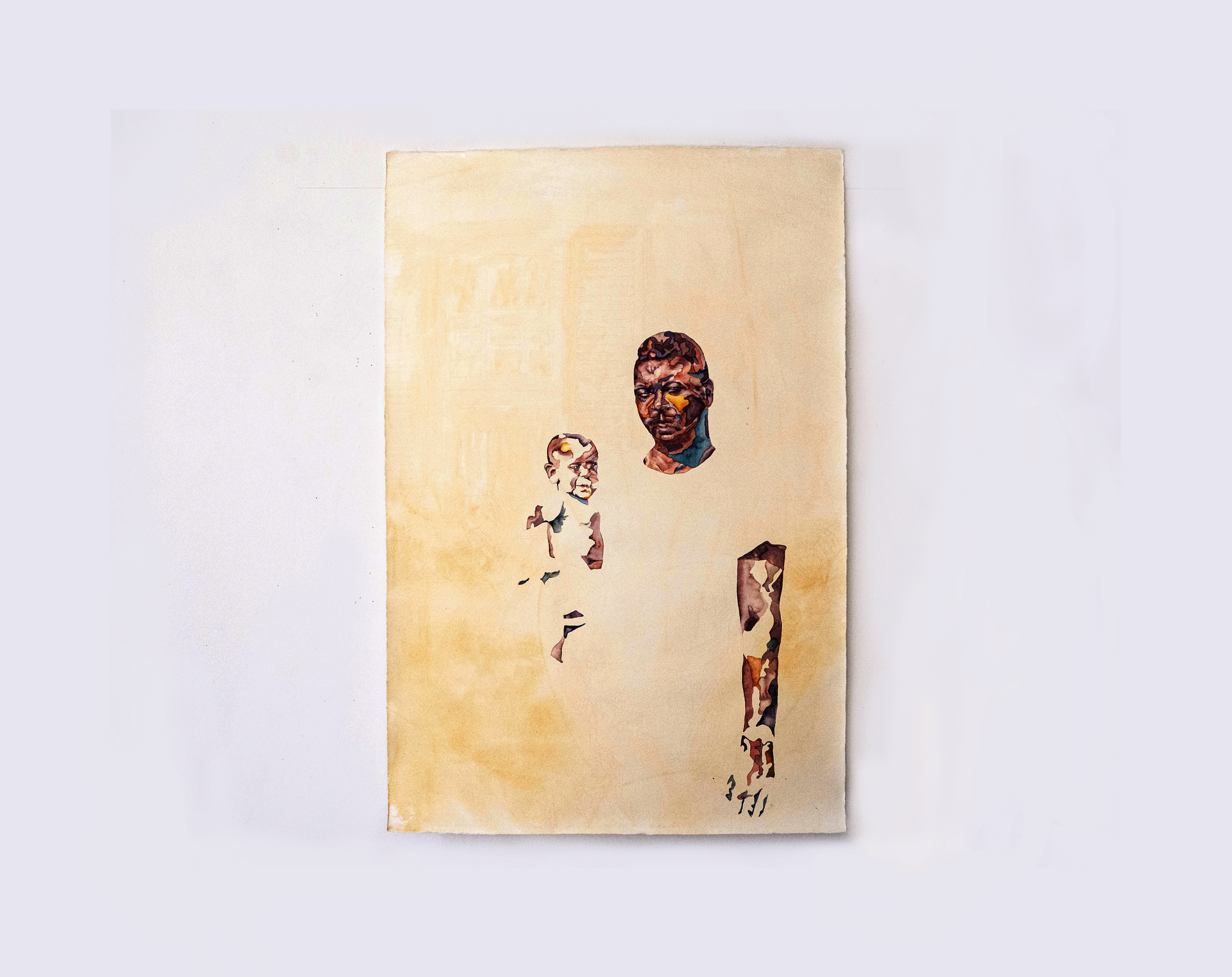
"Holding" | Watercolor and pencil on paper | 31” x 46” | 2022
pt. 3
Through installations and performances that encompass the audience in relation to works on the wall, I invite, position, and challenge how the audience moves and is activated by the work, incorporating vocals, watercolors, performance, fabric, and projections as mediums of inquiry. For instance, in my watercolor portraiture, I abstract the figure from the setting making it illegible (at first glance) to the audience. This subtle moment of abstraction positions the audiences embodied prior knowledge to fill in or complete the piece. As the setting is slowly revealed to the viewer by their movement throughout the space, our internal understandings of self and culture are brought into question.
Freedom isn't always played at one volume,
or declared in big moments,
or struck with profound realizations,
and dramatic events.
Freedom isn't always loud.
It can,
has,
and will be when it needs to.But it is in the
small,
quiet
momentswhere freedom,
most loudly,
sings.
“Pace/Place/Space/Tempo” in relation to my abstract watercolor portraiture serves to blend the role the often-differentiating categories of “abstraction” and “portraiture” by reflecting my lived and learned cultural experience while centering the audience/participant as the subject in the work through the implication bodily movements. This disruption of socialized categorization in reference to painting and sculpture is furthered by the use of watercolor as a fine art medium.
These works- created predominantly in watercolor- refract how we conceptualize the fluid medium, reclaiming an often described as “difficult”/ “sketch” medium for its “uncontrollable” qualities, and rather conceptualize the freedom of watercolors as akin to the expression of Black living- always being, responding, adapting, flowing- the very active living of liberation, navigating the confines of oppression. Together, we dance with time and fall to gravity. We blend, bleed, and bloom; we stretch, we resist, we flood and pour out- we drip. These works- potent in texture, heavy in meaning, and rich in nuance- reflect, refract and extend our unique relationships to pace, place, space, and tempo through movements grounded in Black Feminist Theory and the Black Radical Tradition, activating our embodied knowledge so we may move- with our whole selves and our full intensions- towards equity.
Image
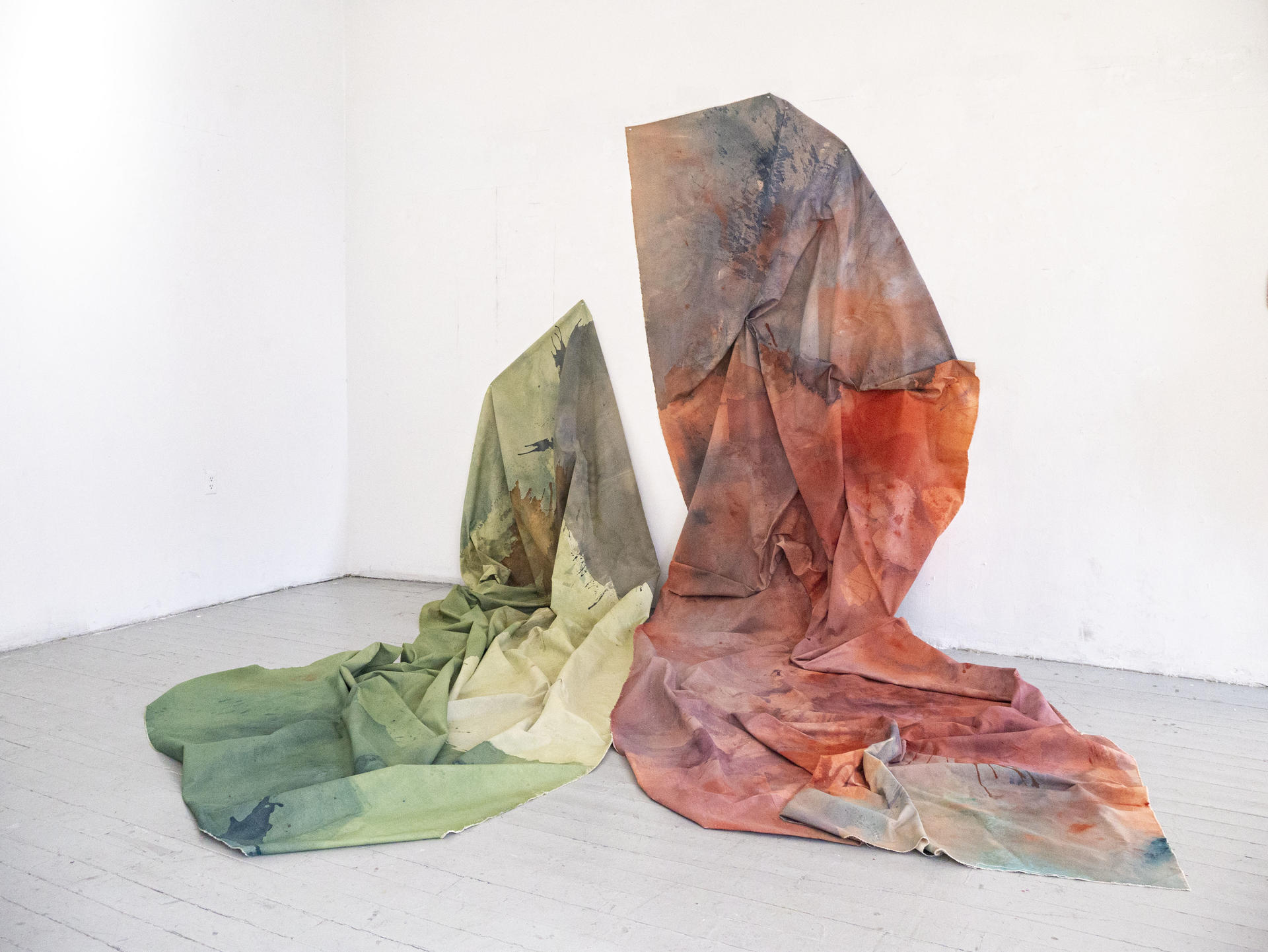
"FlutterBys" | Watercolor, acrylic, thread, and folds on canvas | 10’ x 15’ | 2022
pt. 4
- Architecture
- Ceramics
- Design Engineering
- Digital + Media
- Furniture Design
- Global Arts and Cultures
- Glass
- Graphic Design
- Industrial Design
- Interior Architecture
- Jewelry + Metalsmithing
- Landscape Architecture
- Nature-Culture-Sustainability Studies
- Painting
- Photography
- Printmaking
- Sculpture
- TLAD
- Textiles
